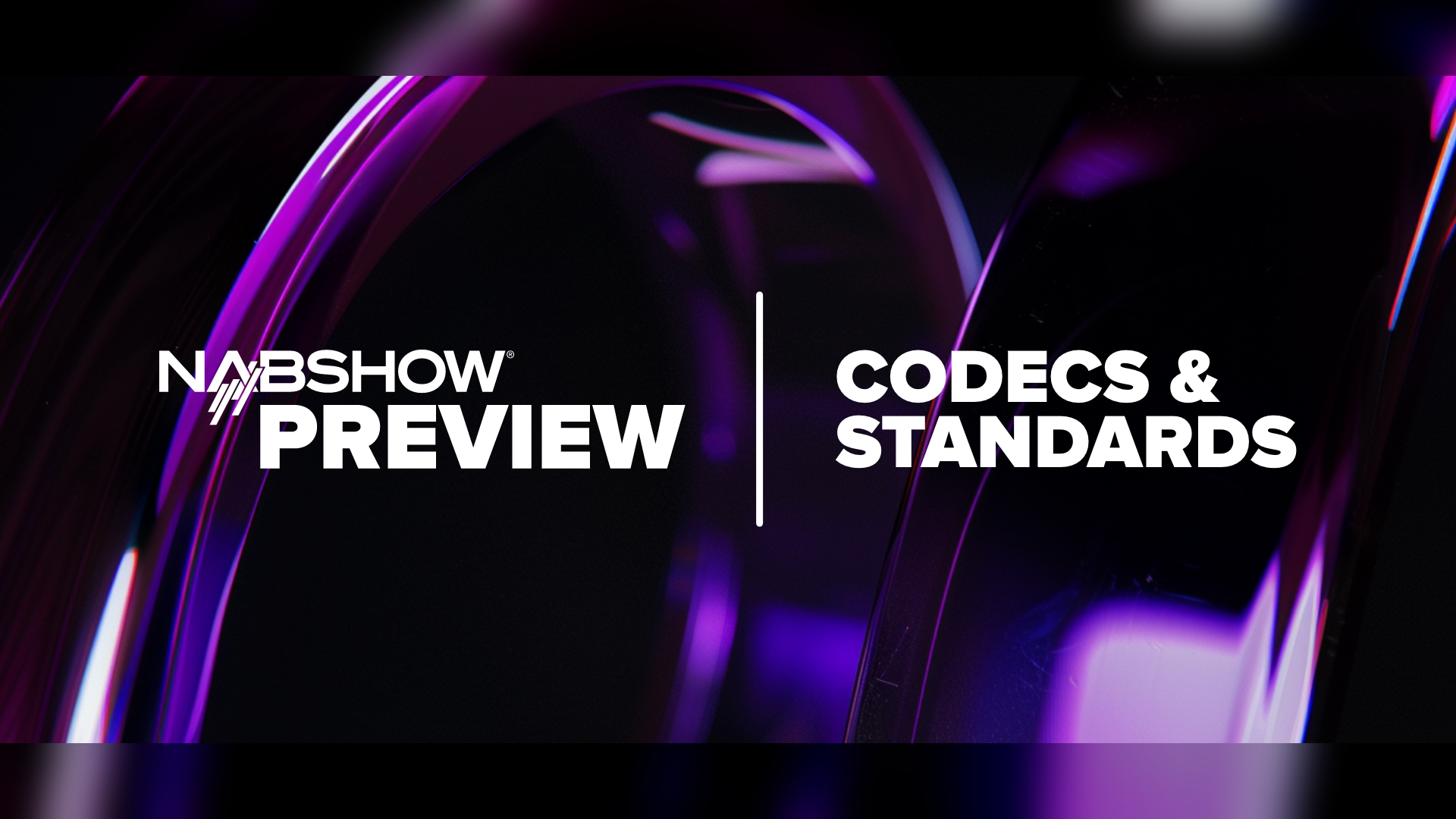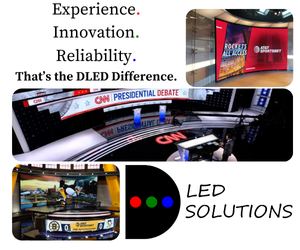NAB Show Preview: New codecs and compression standards set to reshape media workflows

Subscribe to NCS for the latest news, project case studies and product announcements in broadcast technology, creative design and engineering delivered to your inbox.
Codecs and formats are adapting to meet new content demands while enabling more efficient pipelines from production to distribution.
The transition to IP-based workflows from SDI-based systems has been ongoing for several years, with codecs playing a crucial role in determining how efficiently video can move through these networks.
As the industry continues to refine these workflows, the focus is increasingly on the seamless integration of various technologies.
SMPTE ST 2110, the suite of standards that defines how to send digital media over IP networks has seen accelerating adoption as more pieces of the IP video ecosystem converge. Unlike older technologies that bundled video, audio, and ancillary data into a single transport stream, ST 2110 separates these elements into individual essence streams, allowing for more flexible routing and processing.
“It’s certainly going to be another big year for SMPTE 2110, especially as more of the IP video workflow pieces come together,” said Abe Abt, senior product consultant at AJA Video Systems. “IP video in general will be a huge topic, as it simplifies processes and makes infrastructure more scalable.”
The complexity of bridging different technologies remains challenging as many facilities operate hybrid environments that combine traditional SDI infrastructure with newer IP technologies. This transition period necessitates careful consideration of how different codecs and compression methods interact across these disparate systems, with particular attention to latency, quality and bandwidth requirements.
“Many workflows are still hybrid, and professionals need gateway solutions to go between different IP codecs, formats, and protocols from 2110 to SRT JPEG XS and more, as well as between baseband (SDI, HDMI, etc.) and IP technologies,” Abt added.
JPEG XS leading low-latency revolution
JPEG XS has emerged as a crucial technology for high-quality, low-latency transmission — particularly for live production environments. The codec’s ability to deliver visually lossless video with minimal processing delay makes it ideal for remote production workflows.
“Growing adoption of JPEG XS for high-quality, low-latency transmission is perfect for remote production of live sports,” said Rob Szabó-Rowe, global head of engineering and product management at Tata Communications. “JPEG XS enables the transport of SMPTE 2110 streams, which supports the production of and delivery of higher-resolution video to meet consumer demand for 4K and HDR content.”
Last year’s Olympic Games in Paris demonstrated the real-world potential of these technologies at scale.
“Last summer in Paris we saw a real-world proof of concept, demonstrating how SMPTE ST 2110 and JPEG XS infrastructure can serve as a direct on-ramp to cloud-native workflows at scale,” said Steve Reynolds, chief executive officer at Imagine Communications. “Traditionally, live production required sending IP streams to the cloud as an intermediary, then returning them to the ground for broadcast. What Paris proved is that this step is not always necessary.”
Industry insiders note that JPEG XS may soon find applications beyond traditional broadcast environments.
“Content that is designed to be watched anywhere, on-demand and on any device naturally requires high-quality, low-latency content workflows,” said Ben Shirley, product manager at MainConcept. “This is an ongoing challenge that the industry has been battling for some years now, and one that has recently been jumpstarted by the adoption of JPEG XS in many live streaming workflows.”
Adapting codecs for creator content
The explosive growth of short-form and creator content is reshaping codec requirements as these formats gain mainstream distribution across multiple platforms.
“Short form and creator content in particular is creating a storm. Social media, streaming services and other mainstream content formats are rapidly adopting a head-on approach to short form content,” Shirley explained. “This is fast developing a rich and exciting future for the creator economy, currently worth approximately $250 billion.”
While newer codecs continue to evolve, established compression standards are proving adaptable to these emerging content types.
“Codecs that we have relied on for our content up until now, such as HEVC/H.264 and VVC/H.266 are proving that they are more than well suited for short form content,” noted Shirley. “It is likely that the industry will see an increased adoption in these well-performing codecs for short form content distribution on a wide scale, in the same way that they have been transforming live event coverage for years.”
Next-generation compression technologies
The industry continues to advance compression efficiency with new encoding methods designed to reduce bandwidth and storage requirements.
“Emerging encoding technologies and new codecs are enhancing compression efficiency, reducing storage and bandwidth needs, and ultimately helping companies serve their stakeholders more effectively,” said Richard Andes, vice president of product management at Telestream.
Beyond traditional video compression, specialized codecs for immersive media are also gaining attention.
“With immersive content (such as AR, XR and VR) taking the front line in recent years after the release of Apple Vision Pro, codecs such as MV-HEVC with high interoperability capabilities are proving that new forms of content are effective, popular and even easy to create and manage with the right technology and support,” Shirley added.
The industry is also seeing further adoption of newer standards that promise better efficiency.
“The industry is poised for the wider adoption of efficient compression standards like AV1 and the growing prevalence of 4K video,” said Anupama Anantharaman, vice president of product management at Interra Systems.
HDR workflow integration
High Dynamic Range (HDR) production has become a standard requirement, but implementing efficient workflows that accommodate both HDR and SDR delivery remains challenging.
“There is no doubt that HDR is now a dominant trend impacting broadcast production. Many streaming platforms are now offering HDR as a default option, but at the same time they also need to continue to provide SDR,” said Kevin Salvidge, sales engineering and technical marketing manager at Leader Electronics of Europe.
Production companies are developing new approaches to manage these parallel delivery requirements.
“Unlike the days of simultaneous 2D and 3D production, where we saw two independent productions occurring, Leader is helping production companies in designing creative and innovative production workflows to overcome these challenges,” Salvidge explained.
For live sports production, a “single master” approach is gaining popularity.
“Live sports productions have been adopting what is commonly referred to as a Single Master workflow that sees all signal converted to 1080p HDR,” said Salvidge. “With down-conversion to 1080p, live sport production companies have a process they feel very comfortable with — whilst also retaining artistic intent and emotional impact.”
AI enhancing codec implementation
Artificial intelligence is beginning to influence how compression technologies are implemented and managed within workflows.
“We also expect to see how AI is evolving beyond metadata generation to actively control processes and automate workflows at the 2025 NAB Show,” said Andes. “Real-time analytics and business process requirements are driving automation strategies, ensuring smarter, more efficient media operations.”
These AI applications extend to quality control and optimization of compressed content.
“AI-driven solutions for personalization, content classification, real-time analytics, and automated QC will see increased adoption – especially when they provide cost savings or a competitive advantage,” noted Anantharaman.
As the industry gathers at NAB Show 2025, the evolution of codecs, formats and compression technologies will remain central to discussions about how content moves through increasingly complex and distributed production and distribution networks. These technologies will continue to adapt to emerging content types while enabling more efficient operations across the content supply chain.
Subscribe to NCS for the latest news, project case studies and product announcements in broadcast technology, creative design and engineering delivered to your inbox.






tags
Abe Abt, AJA Video Systems, Anupama Anantharaman, Ben Shirley, codec, hdr, HEVC, High Dynamic Range, Imagine Communications, Interra Systems, JPEG XS, Kevin Salvidge, Leader Electronics, Leader Electronics of Europe, MainConcept, NAB Show 2025, NAB Show News, Richard Andes, Rob Szabó-Rowe, SMPTE ST 2110, Steve Reynolds, Tata Communications, Tata Communications Media, Telestream
categories
NAB Show